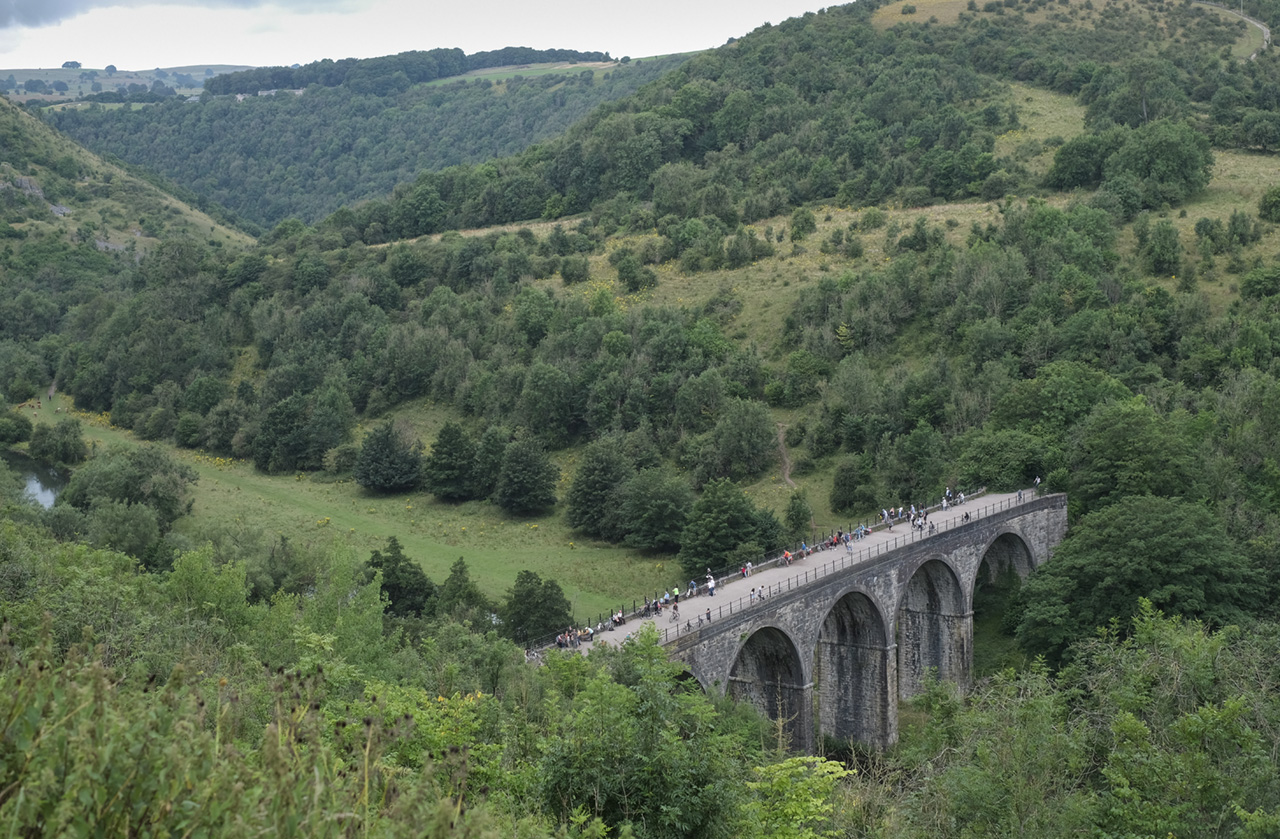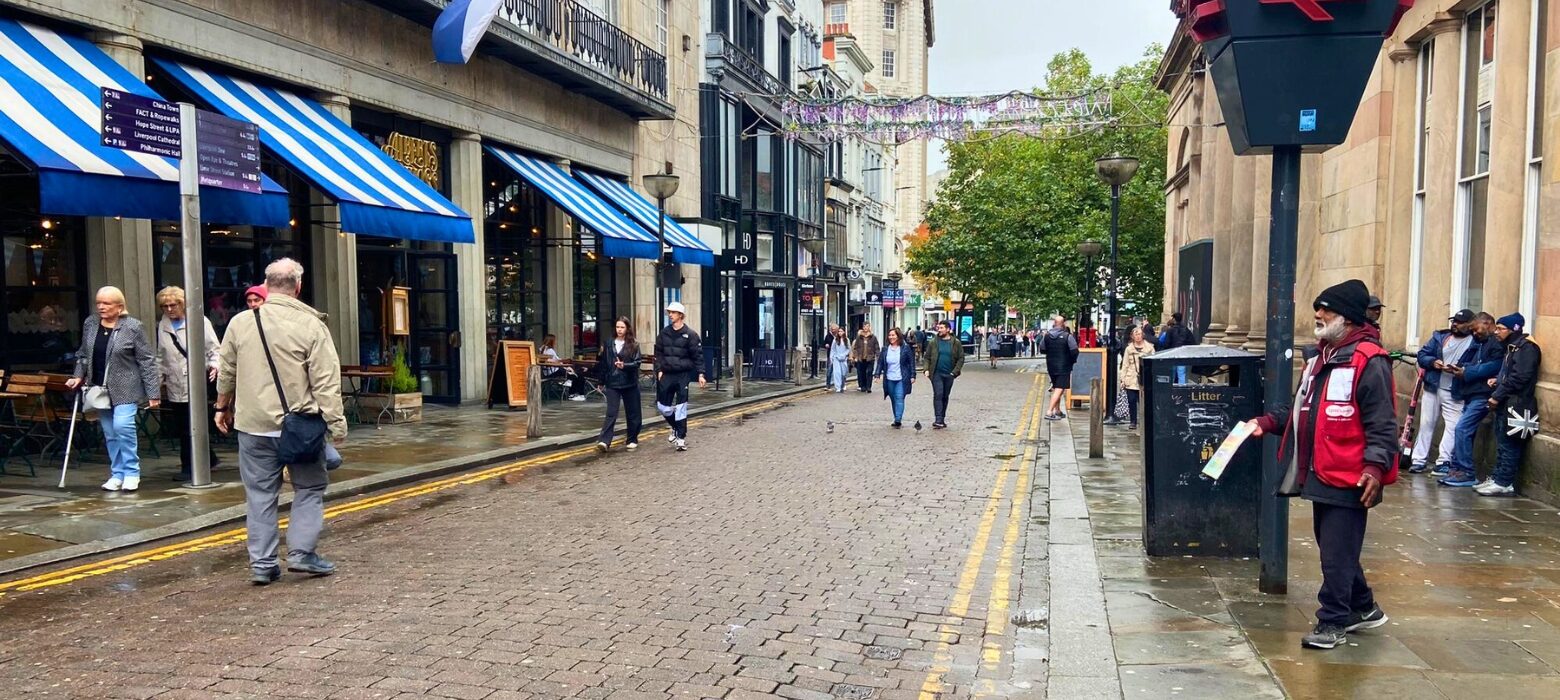The train now standing at Buxton’s platform one is definitely not the 10.52 service to Matlock. It therefore will not be calling at Millers Dale, Monsal Dale, Great Longstone, Hassop, Bakewell, Haddon Hall, Rowsley and Darley Dale. In fact, the tracks have been ripped up. Passengers last took a train along this scenic line through the heart of the Peak District National Park one warm Saturday evening back in June 1968.
Half a century on, however, a train may again stand at Buxton station and travel onwards to Matlock. Efforts are being made to relay the 13-mile railway line through six tunnels and across the much-photographed Headstone Viaduct in beautiful Monsal Dale.
“The Department of Transport has continually underestimated the potential passenger numbers.”
The campaign is part of a growing movement that could herald a new golden age on Britain’s railways by reviving long-disused lines. Earlier this year a report identified over 200 of them that were deemed capable of restoration, and called for a £4.8 billion programme to bring back into service 343 miles of railway. Together with a further 177 miles of track now used only by freight trains, the proposal could generate up to 20 million more passenger journeys a year. In response the transport secretary Grant Shapps put aside £500 million for reopening the first routes and invited the submission of schemes.
This has sparked considerable competition for the cash among railway campaigners hoping to reopen lines that were axed by the notorious Beeching cuts, named after the British Rail chairman Dr Richard Beeching who closed more than 6,000 miles of the UK rail network in the 1960s.
Crusades to resurrect rural lines like the Buxton-Matlock evoke the classic Ealing comedies film The Titfield Thunderbolt of 1953, which presaged the Beeching cuts by depicting a fight by villagers to save their branch line from closure. But these new campaigns are far from exercises in railway nostalgia. The lines would not carry Thomas the Tank-like steam engines, like on so-called heritage railways, but run electrified scheduled services to improve public transport provision, take traffic off roads and reduce carbon emissions and pollution.
The Buxton-Matlock line is cited by the pressure group Campaign for Better Transport as a good example of railways that have a strong economic, social and environmental case for restoration. But Stephen Chaytow, leader of the group hoping to revive the Buxton-Matlock, acknowledges it will be an uphill struggle given the lukewarm response by the leadership of Derbyshire County Council and the Peak District National Park, whose co-operation is necessary, although he takes encouragement from the fact that planners have at least kept the door open by committing to keep the trackbed free of building development.
Central to Chaytow’s case for reinstating the line is the provision of an alternative cross-country link between Manchester and the East Midlands. “And it’s about connecting disconnected communities,” he says. “For a start there are real local transport problems for the national park’s 38,000 population. We have also identified that the line would bring enhanced connectivity to 150,000 people in central Derbyshire who don’t have much access to trains. But if we take on board a report on the national rail infrastructure published last December which said that railways need to transport people smoothly and seamlessly between city centres then you have to include Manchester, Stockport, Sheffield, Derby and to an extent Nottingham and Leicester in this.”
On paper at least, the chances for reinstating the line look good. Two local MPs are sponsoring the proposal and have had a positive meeting with the current rail minister Chris Heaton-Harris, while detailed reports have been produced outlining the case. However, there remains a highly sensitive sticking point – the Monsal Trail, an 8.5 mile-long walking, cycling and horse-riding route that uses part of the old railway line. Since opening in 1981 it has become one of the most popular attractions in the Peak District.
On a typical summer’s day hundreds of people use the trail between Chee Dale and the town of Bakewell. As a result, the old stations at Hassop and Millers Dale have found new roles as cafés and information centres. Since the campaign was launched to rebuild the railway there has been a petition raised to keep the Monsal Trail for leisure purposes.
A random snapshot of opinion taken by Big Issue North on the Headstone Viaduct revealed mostly opposition to the proposal. Many of those canvassed were from outside the immediate area. Pensioners Maggie and John from Cambridge said they valued the flatness of the route because it was good for older people. Barry and Emma from Essex said it was their first time walking the Monsal Trail and they loved it so much they intended to return. Setting off with a group of friends from Solihull, teenager Dan had found the trail by googling the best walks in the Peak District and couldn’t imagine it carrying trains again.
Sue from Buxton said she had thought a great deal about the restoration and decided she was against it.
“This surprised me because I’m all for trains, but I think it would take away an incredibly valuable resource from people – a safe place for children to cycle and a route for walkers who are not good on hills any more.”
Chaytow has an answer to these points. “The Monsal Trail is lovely in its way but one of the things you notice is you’re spending a lot of time in tunnels and cuttings and the views aren’t particularly good.”
A Buxton community group has surveyed a potential alternative route it says would be “as good if not better” than the current Monsal Trail and would open before work began to restore the railway line. A Derby University team is surveying this alternative to make it level and accessible. “There’s a lot happening on that front,” Chaytow says.
Further north, one campaign to restore a local railway is inching nearer to success. The 12 mile-long Skipton to Colne line first opened in 1848 to connect East Lancashire with the industrial cities of Yorkshire, and was one of the last casualties of the Beeching cuts. But after it closed in February 1970 campaigners never gave up hope of seeing trains run along the line once more and local councils effectively mothballed it by refusing planning permission to build on the old trackbed.
There is no equivalent of the Monsal Trail to upset walkers, cyclists and horse-riders and therefore little opposition to the Skipton-Colne’s revival. According to the campaign group Skipton and East Lancs Rail Action Partnership (SELRAP) there is now a compelling case for restoration.
“It would provide a much-needed new route between Lancashire and Yorkshire,” says SELRAP’s Jane Wood. “Skipton-Colne is a relatively short section of line but when you look at the map of the northern rail network you can see it’s the missing link. For over 600,000 people who live in east Lancashire towns it would open up jobs and studying opportunities in Leeds and Bradford. For people in the Skipton and Dales area it would provide a more direct route to Manchester and mean less car journeys. Because of the climate crisis we need to encourage people to make more use of public transport to reduce carbon emissions, and our plan is for the line to be fully electrified”.
SELRAP argues there is a strong socio-economic case for reopening the line, pointing out that house prices in Colne are half of those just 12 miles away in Skipton, and that better transport would help the case for building thousands of new homes in the area. The cost of the restoration project has been put at £250 million, and on a visit to Colne this year Shapps said there was “a plan in place” for the railway. A decision is expected this autumn.
This slideshow requires JavaScript.
Another candidate for revival is the defunct five mile-long branch line between Fleetwood and Poulton-le-Fylde, which closed to passenger services in 1970 but continued to carry freight to and from an ICI chemical works until 1999. Most of the line still exists, and members of the restoration campaign, the Poulton & Wyre Railway Society, have been busy using secateurs, sheers and chainsaws to clear the overgrown track. They have also laid new sleepers and even done restoration work at a couple of stations.
The economic case argues that while Fleetwood was once self-reliant on jobs, the end of the fishing industry and the ICI closure has turned it into a town of commuters who now need easier access to towns like Preston, which although just 16 miles away involves a lengthy bus ride. This summer a feasibility study by Lancashire County Council found that the line would transform the town’s economy.
One of the easiest railway lines to reopen for passengers is the Ashington-Blyth-Tyne link in the North East. The track was retained for freight trains after the 15-mile line to Benton Junction’s closure in 1964. Earlier this year the government kicked off the restoration with a £34 million grant to Northumberland County Council, and it is hoped a half-hourly service to Newcastle will commence in 2023.
The Campaign for Better Transport’s political adviser Norman Baker, who as a Liberal Democrat MP in the 2010-2015 coalition government was transport minister responsible for railways, believes the public mood is in favour of expanding the UK rail network. “One reason is that it enables people without a car to get around. Secondly, there’s an understanding and acceptance that rail travel is greener because it emits far fewer carbon emissions than road transport and reduces congestion.”
He concedes that some opportunities for reopening lines pushed for by campaigners have been lost because the trackbed has been built on in places, creating prohibitive property issues. But quite a few make sense, he says, and existing freight-only lines are a good place to start since in most cases they carried passengers in the past. “There are many other lines where the track might have been lifted but the route has been maintained, so we need to regrow the network.”
And it is regrowing, albeit at a slower rate than campaigners would like. The 35-mile Borders Railway from Edinburgh to Tweedbank was opened in 2015, using a closed line that once ran from the Scottish capital to Carlisle, and in its first month of operation trains carried over 125,000 passengers, nearly one-fifth of the predicted annual usage. The unexpected success led to packed trains and passengers unable to board at some stations.
Also in Scotland, the 13 mile-Alloa to Stirling railway has been restored by using a branch line that once served a coal-fired power station. It was such a success when it reopened that the length of time passengers spent queueing to buy a ticket was actually longer than the journey time.
Yet more encouragement for restoration campaigns comes from the 15.5 mile Dartmoor Line in Devon, which later this year will reopen for scheduled passenger services between Exeter and Okehampton for the first time since 1972, and the 19-mile Newport-Ebbw Vale line in South Wales, part of a £210 million scheme by the Welsh government to get people to use public transport.
Baker believes that crusades to restore lines are not motivated by railway nostalgia but need. And he suspects that there is more demand from the public for revived rail links than official government figures suggest. “Part of the problem,” he says, “is that the Department of Transport has continually underestimated the potential passenger numbers.”
Back on the Buxton-Matlock line Chaytow has no doubt of the railway’s appeal. “If you add up the catchment areas of North West England, Sheffield and the East Midlands then that 13-mile stretch of track could touch the day-to-day lives of nine million people.”
Like the Big Issue North on Facebook







Leave a reply
Your email address will not be published.